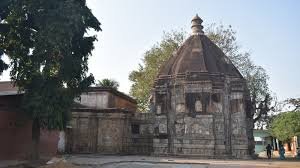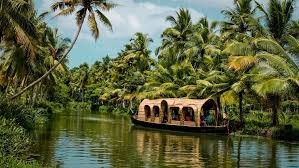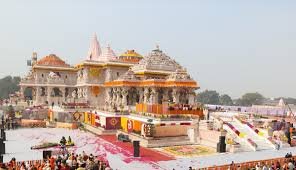Introduction
Nestled on the Monikut Hill in Hajo, Assam, the Hayagriva Madhava Temple stands as a symbol of spiritual harmony and devotion. Dedicated to Lord Vishnu’s incarnation, Hayagriva, this ancient temple holds immense significance for both Hindus and Buddhists.
With its rich history, mythological legends, and breathtaking surroundings, this sacred site attracts devotees, historians, and travelers alike. The temple’s peaceful ambiance, combined with its architectural beauty, makes it a must-visit destination for those seeking divine blessings and cultural insights.
Let’s embark on a journey to explore the history, significance, architecture, festivals, and spiritual aura of the Hayagriva Madhava Temple.
Mythological Significance of Hayagriva Madhava Temple
The Hayagriva Madhava Temple is steeped in ancient legends and holds spiritual importance for multiple faiths.
The Vishnu Avatar – Hayagriva
According to Hindu mythology, Lord Vishnu took the form of Hayagriva, a deity with a horse’s head and a human body, to restore the Vedas from demons. The temple is dedicated to this divine form, symbolizing wisdom and knowledge.
Devotees believe that worshipping Hayagriva can bless them with intelligence, enlightenment, and prosperity.
The Buddhist Connection – A Sacred Site
The temple is equally revered in Buddhism, as many believe that this is the place where Lord Buddha attained Nirvana (salvation). Because of this, the Hayagriva Madhava Temple is a significant pilgrimage site for Buddhists from India, Bhutan, Nepal, and Tibet.
This unique confluence of Hindu and Buddhist traditions makes the temple an extraordinary spiritual landmark in Assam.
Historical Background of the Temple
The Hayagriva Madhava Temple is believed to have been originally built in the 6th century during the Pala Dynasty. Later, in the 16th century, it was renovated by King Raghudeva Narayan, a powerful Koch dynasty ruler.
Throughout history, the temple has withstood time and natural calamities, remaining a pillar of faith and devotion for centuries. Today, it continues to be a place of worship, meditation, and cultural significance.
Architectural Splendor of Hayagriva Madhava Temple
One of the temple’s most striking features is its splendid architecture, which reflects a blend of Hindu and Buddhist influences.
Key Architectural Highlights
Stone-Carved Structure: The temple is constructed with massive stone blocks, showcasing fine craftsmanship and the skill of ancient artisans.
Dome-Shaped Shikhara: Unlike the typical North Indian temple spires, the shikhara (dome) of this temple resembles a Buddhist stupa, signifying the fusion of Hindu and Buddhist architectural styles.
Intricate Sculptures: The outer walls of the temple feature beautiful carvings of deities, mythical creatures, and floral motifs, displaying the region’s artistic heritage.
Sacred Pond – Madhab Pukhuri: Adjacent to the temple lies a large pond, where devotees perform ritualistic ablutions before offering prayers.
The temple’s scenic hilltop location provides panoramic views of the surrounding countryside, making it a perfect place for spiritual reflection and tranquility.
Festivals and Rituals at Hayagriva Madhava Temple
The Hayagriva Madhava Temple is not just an architectural marvel but also a hub of grand religious celebrations.
Doul Utsav – Assam’s Holi Festival
One of the most significant festivals celebrated here is Doul Utsav, the Assamese version of Holi.
🎉 Highlights of Doul Utsav:
- The festival is dedicated to Lord Krishna and involves vibrant colors, devotional songs, and dance performances.
- Devotees carry the idol of Madhava in a grand procession, accompanied by music and chants.
- The temple comes alive with thousands of visitors, rituals, and joyous celebrations.
Janmashtami – The Birth of Krishna
📌 Janmashtami, marking the birth of Lord Krishna, is another major event where devotees gather in large numbers for special pujas, kirtans, and fasting rituals.
Buddhist Pilgrimage
📌 Since the temple holds sacred significance in Buddhism, Buddhist monks and followers visit to meditate and seek blessings.
These grand festivals make the Hayagriva Madhava Temple a vibrant and spiritually uplifting place to visit throughout the year.
Why Visit Hayagriva Madhava Temple?
1. A Confluence of Two Faiths
Few places in India serve as a sacred site for both Hindus and Buddhists, making this temple a unique spiritual and cultural landmark.
2. Breathtaking Natural Beauty
Situated atop Monikut Hill, the temple offers stunning views of Assam’s lush landscapes and serene surroundings.
3. Rich History and Legends
With its origins tracing back to the 6th century, the temple stands as a testament to Assam’s glorious past and religious heritage.
4. Architectural Grandeur
The temple’s stone-built structure, intricate carvings, and blend of Hindu-Buddhist styles make it an architectural masterpiece worth exploring.
5. A Peaceful Spiritual Retreat
Whether you seek divine blessings, cultural insights, or a tranquil escape, the Hayagriva Madhava Temple offers a soul-enriching experience.
How to Reach Hayagriva Madhava Temple, Hajo
The Hayagriva Madhava Temple is well-connected to Guwahati, making it easily accessible.
📍 By Air
The nearest airport is Lokpriya Gopinath Bordoloi International Airport (Guwahati Airport), about 30 km away. From there, you can hire a cab or taxi.
🚆 By Rail
The nearest railway station is Guwahati Railway Station, approximately 32 km away.
🚖 By Road
Hajo is well connected by state highways and local roads. You can reach the temple via:
- Private cabs and taxis
- Local buses from Guwahati
- Auto-rickshaws from nearby towns
The scenic drive through Assam’s lush countryside makes the journey even more delightful.
Best Time to Visit
Although the temple is open all year round, the best time to visit is:
March (During Doul Utsav / Holi Festival) – Experience the temple’s vibrant celebrations.
August-September (During Janmashtami) – Witness the divine birth celebrations of Lord Krishna.
October-March – The weather is pleasant, making it ideal for sightseeing.
Avoid visiting during peak monsoon months (June-July) due to heavy rains.
Conclusion
The Hayagriva Madhava Temple in Hajo is a spiritual treasure that bridges the gap between Hindu and Buddhist traditions. With its ancient legends, breathtaking architecture, and peaceful surroundings, the temple continues to inspire faith and devotion.
Whether you are a devotee, a history lover, or a traveler, a visit to this sacred shrine will leave you spiritually fulfilled and culturally enriched.
So, step into this divine sanctuary, offer your prayers, and let the blessings of Lord Hayagriva bring wisdom, peace, and prosperity into your life.





